Embroidery Quilting: A Descriptive Guide for Quilters
Welcome to the vibrant and creative world of embroidery quilting! This art form is a beautiful fusion of two beloved crafts—embroidery and quilting—that brings a unique flair to traditional quilts. Imagine wrapping yourself in a quilt not just made for warmth, but also adorned with intricate designs that tell a story or express a sentiment. In this guide, we'll dive deep into the fascinating aspects of embroidery quilting, exploring its rich history, essential techniques, and the tools that can help you elevate your quilting game.
Embroidery quilting has roots that stretch back centuries, where artisans would enhance their quilts with decorative stitching. This practice not only served a functional purpose but also transformed quilts into works of art. Today, embroidery quilting remains significant, allowing quilters to express their personal style and creativity. Whether you're a seasoned quilter or a curious beginner, understanding the nuances of this craft can open up a world of possibilities for your quilting projects.
As we journey through this guide, expect to uncover essential tips and tricks that will enhance your quilting experience. From selecting the right fabrics and threads to mastering various embroidery techniques, you'll find valuable insights that can help you create stunning quilts. So grab your sewing kit, and let’s embark on this creative adventure together!
Embroidery quilting is more than just a technique; it’s a celebration of creativity and craftsmanship. By combining the meticulous art of embroidery with the cozy tradition of quilting, you can create pieces that are not only functional but also visually stunning. This section will delve into the history of embroidery quilting, illustrating how it has evolved over time and why it continues to captivate quilters around the globe.
Throughout history, quilts have served various purposes—from practical bed coverings to cherished heirlooms. The addition of embroidery has elevated these pieces, allowing for personalization and artistic expression. Think of embroidery quilting as the icing on a cake; it adds that extra touch that makes it truly special. As you explore this craft, you’ll discover how the interplay of fabric and thread can transform a simple quilt into a treasured masterpiece.
To embark on your embroidery quilting journey, having the right tools and materials is crucial. The right supplies can make all the difference in the quality and ease of your projects. Here’s a quick rundown of what you’ll need:
- Fabrics: Choose high-quality cotton or blended fabrics that are suitable for both quilting and embroidery.
- Threads: Opt for threads that are strong and colorfast; cotton and polyester threads are popular choices.
- Embroidery Machine: If you want to speed up the process, consider investing in a good embroidery machine, though hand-stitching has its own charm!
- Needles: Use needles specifically designed for embroidery to ensure smooth stitching.
With these essentials in hand, you’ll be well-equipped to tackle any embroidery quilting project that comes your way!
The fabric you choose can significantly impact the final look of your quilt. Not all fabrics are created equal, and some are better suited for embroidery quilting than others. For instance, lightweight cotton is a favorite among quilters due to its versatility and ease of handling. On the other hand, heavier fabrics like canvas can add durability but may require special techniques for embroidery.
When selecting fabric, consider the following:
- Texture: Smooth fabrics allow for easier stitching, while textured fabrics can create unique visual effects.
- Color: Choose colors that complement each other; this can make your embroidery designs pop.
- Pattern: If your fabric has a busy pattern, keep your embroidery designs simple to avoid a cluttered look.
Once you've selected your fabrics, caring for them properly is essential. Before you start quilting, wash and dry your fabrics to pre-shrink them and remove any chemicals. After quilting, store your quilts in a cool, dry place, away from direct sunlight to prevent fading. Remember, a little care goes a long way in maintaining the beauty of your embroidery quilts!
Color is a powerful element in quilting. It can evoke emotions, create harmony, or even make a bold statement. When choosing colors for your embroidery designs, consider using a color wheel to identify complementary colors that enhance your overall design. Don't be afraid to experiment—sometimes, unexpected color combinations can lead to stunning results!
Now that you have your tools and materials, it’s time to dive into the various embroidery techniques that can be applied to quilting. From traditional hand-stitching to modern machine embroidery, each technique has its own unique advantages. Hand-stitching allows for a personal touch and can be therapeutic, while machine embroidery can save time and produce intricate designs with precision.
Patterns and designs are the heart of embroidery quilting. Popular motifs include floral designs, geometric shapes, and even personalized messages. Incorporating these elements into your quilting projects can add a personal touch that makes your quilts truly one-of-a-kind.
Personalization is key in quilting. Creating custom embroidery designs that reflect your style can be a rewarding experience. You can start by sketching out your ideas or using software designed for embroidery design. The possibilities are endless, and the only limit is your imagination!
Adding text to quilts can infuse them with meaning. Whether it’s a favorite quote, a family name, or a special date, incorporating text can elevate your quilt from a simple blanket to a cherished keepsake. Explore various fonts and styles to find what resonates with you, and don’t hesitate to play around with placement to create a balanced design.
The finishing touches can make or break a quilt. Binding, labeling, and other final steps are essential to ensure your embroidery quilt is complete and ready for display. Take your time with these steps; they can truly elevate your quilt from good to extraordinary!
Q: What is the best fabric for embroidery quilting?
A: High-quality cotton is often recommended due to its versatility and ease of handling.
Q: Can I use a regular sewing machine for embroidery quilting?
A: Yes, but an embroidery machine can make the process easier and allow for more intricate designs.
Q: How do I care for my embroidered quilts?
A: Wash and dry your fabrics before quilting, and store completed quilts in a cool, dry place away from sunlight.
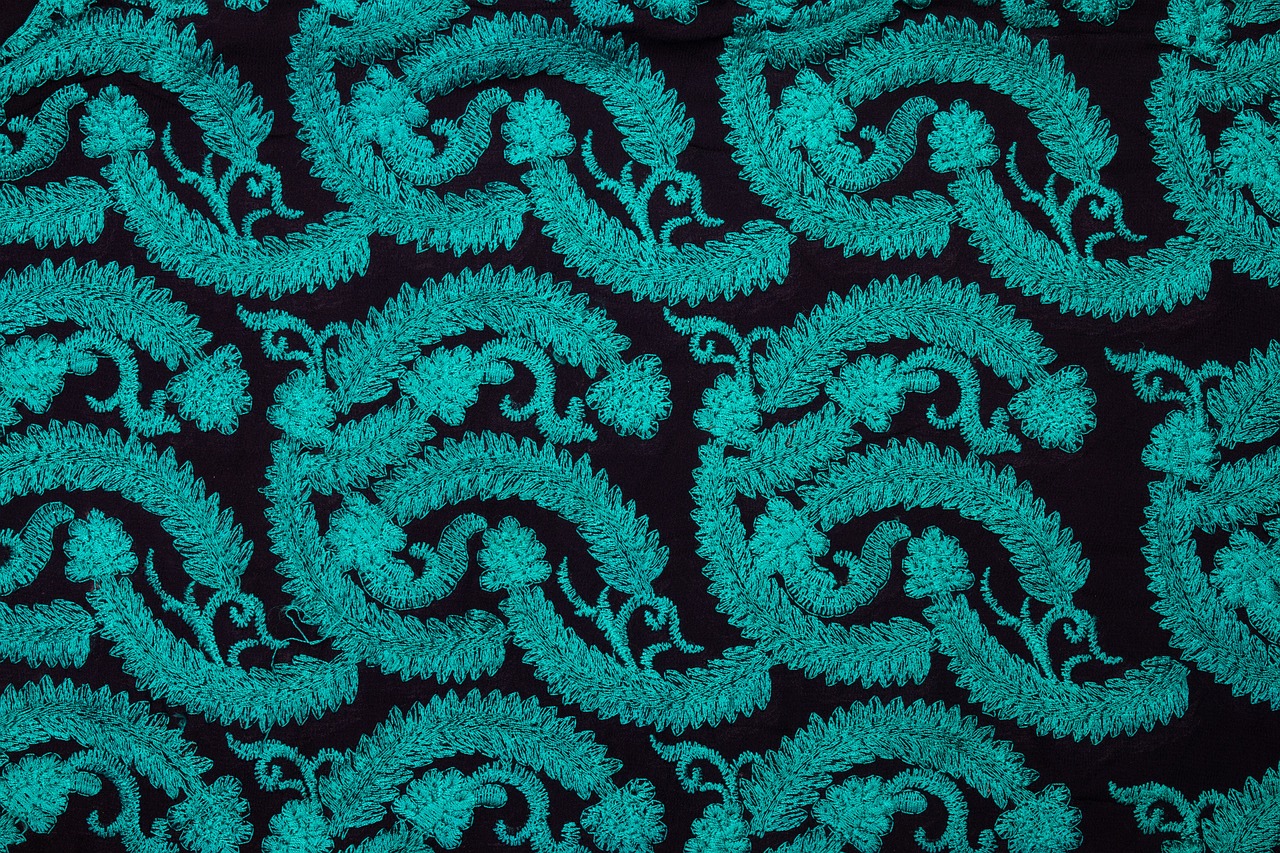
Understanding Embroidery Quilting
Embroidery quilting is a captivating fusion of two traditional crafts that has gained immense popularity among crafters and quilt enthusiasts alike. Imagine taking the cozy comfort of a quilt and infusing it with the intricate beauty of embroidery; that's what this art form is all about! It’s like adding a sprinkle of magic to your fabric canvas, transforming a simple quilt into a stunning masterpiece that tells a story. The history of embroidery quilting dates back centuries, where artisans would embellish their quilts not just for warmth but to express creativity and cultural heritage. By intertwining these two crafts, quilters can create unique pieces that resonate with personal significance and aesthetic appeal.
The significance of embroidery quilting goes beyond mere decoration; it symbolizes a connection to tradition and a celebration of creativity. Each stitch holds meaning, often representing memories, emotions, or milestones. Whether you’re a novice or a seasoned quilter, the beauty of embroidery quilting lies in its versatility. You can opt for classic motifs like flowers and leaves or dive into more modern designs that reflect current trends. The possibilities are endless! This craft invites you to experiment and personalize your quilts, making them truly one-of-a-kind.
Moreover, embroidery quilting serves as a wonderful outlet for self-expression. It allows you to play with colors, textures, and patterns, effectively turning your quilt into a canvas where you can showcase your artistic flair. Think of your quilt as a blank page, waiting for your creative story to unfold through stitches and threads. With each project, you have the chance to explore new techniques, combine different fabrics, and even incorporate personal messages or quotes that resonate with you. This not only enhances the visual appeal of your quilt but also adds a layer of depth and meaning that can be cherished for generations.
As you embark on your embroidery quilting journey, remember that it’s not just about the end product; it’s about the joy of creating. The process of selecting fabrics, planning designs, and stitching them together can be incredibly rewarding. So, grab your needle and thread, and let your imagination run wild! In the upcoming sections, we will delve deeper into the essential tools and materials you’ll need, along with techniques that will elevate your quilting projects to new heights.
In conclusion, understanding embroidery quilting is about appreciating its rich history, recognizing its significance in personal expression, and embracing the joy of creativity. So, whether you're looking to create a family heirloom or simply want to explore a new hobby, embroidery quilting offers a fulfilling and exciting path to explore.
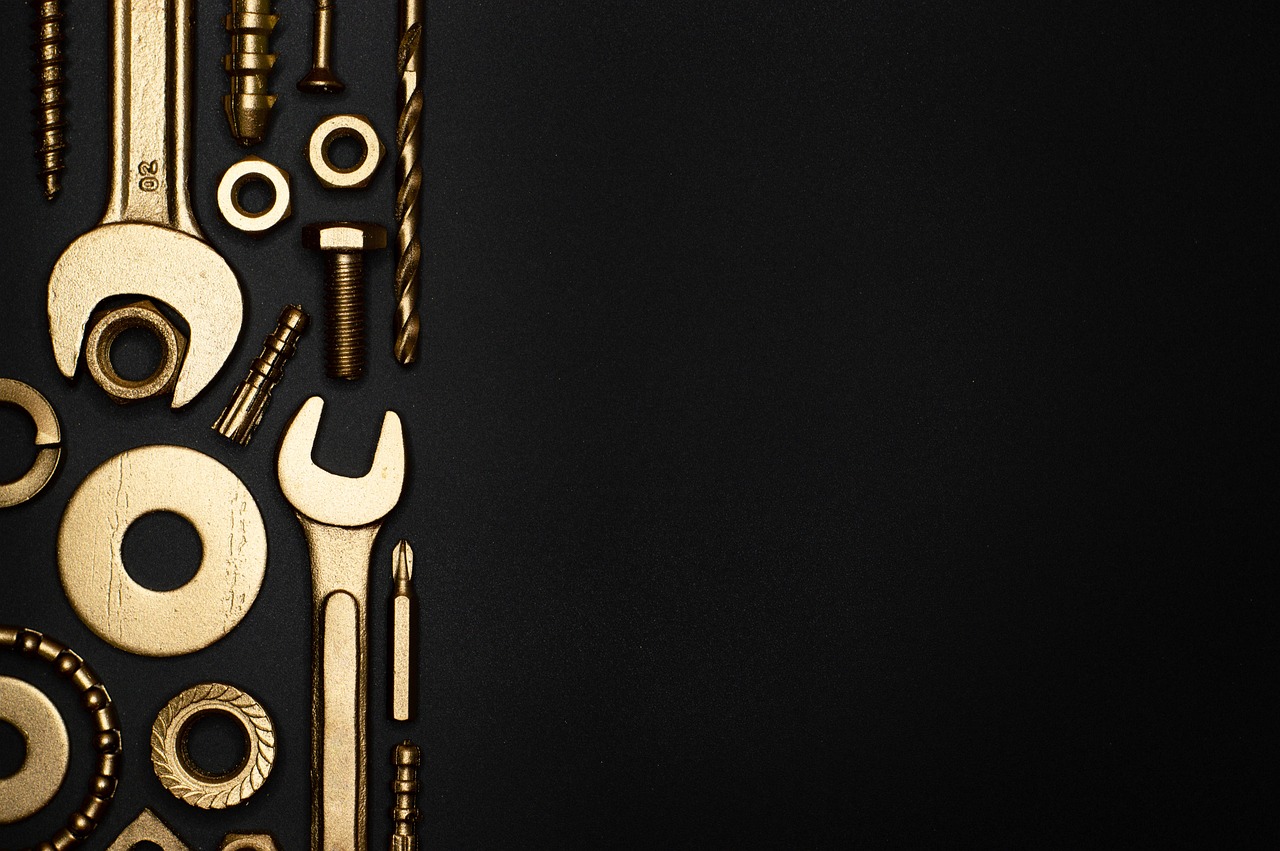
Essential Tools and Materials
When it comes to embroidery quilting, having the right tools and materials can make a world of difference in the quality and enjoyment of your projects. Whether you're a seasoned quilter or just starting out, understanding what you need is crucial. Let’s dive into the essential supplies that will elevate your quilting experience to new heights!
First and foremost, you’ll want to invest in a quality sewing machine. A machine that offers embroidery capabilities can open up a whole new world of creativity. Look for features like adjustable stitch lengths, multiple embroidery designs, and an easy-to-use interface. Some popular brands include Brother, Janome, and Bernina, which are known for their reliability and functionality. If you're on a budget, don't worry! There are plenty of affordable options that can still deliver impressive results.
Next up is fabric. Choosing the right fabric is not just about aesthetics; it can significantly impact the final look of your quilt. Cotton is a popular choice due to its versatility and ease of use. However, you might also consider fabrics like linen or batik for different textures and patterns. Each fabric type can bring a unique flair to your embroidery quilting projects. Remember to always pre-wash your fabrics to avoid any surprises later on!
Threads are another critical component. High-quality embroidery threads can enhance the vibrancy of your designs. Look for threads made from polyester or rayon, as they tend to hold up well in the wash and maintain their color over time. It’s also wise to have a variety of thread colors on hand so you can experiment with different combinations and effects. A good rule of thumb is to choose a thread color that complements your fabric, allowing the embroidery to stand out beautifully.
Don’t forget about embroidery hoops! These handy tools help keep your fabric taut while you stitch, ensuring that your designs come out neat and precise. They come in various sizes, so you can choose one that fits your project best. Additionally, consider investing in some quality stabilizers. Stabilizers provide support to your fabric during the embroidery process, preventing distortion and ensuring that your stitches remain crisp and clean.
Lastly, let’s talk about cutting tools. A good pair of fabric scissors is essential for clean cuts, while a rotary cutter can make quick work of larger pieces. Don’t forget a cutting mat to protect your surfaces! Having the right cutting tools will save you time and frustration, allowing you to focus on the fun parts of quilting.
Here’s a quick summary of the essential tools and materials you’ll need:
| Item | Description |
|---|---|
| Sewing Machine | Look for a model with embroidery capabilities for added creativity. |
| Fabric | Cotton is ideal, but explore other options like linen and batik. |
| Threads | Choose high-quality polyester or rayon threads for vibrant designs. |
| Embroidery Hoops | Keep your fabric taut for neat and precise stitching. |
| Stabilizers | Prevent distortion and ensure crisp stitches during embroidery. |
| Cutting Tools | Invest in fabric scissors and a rotary cutter for clean cuts. |
With these in your quilting arsenal, you’ll be well-equipped to embark on your embroidery quilting journey. Remember, the right supplies not only enhance your creativity but also make the process more enjoyable. So, gather your materials, unleash your imagination, and let the stitching begin!
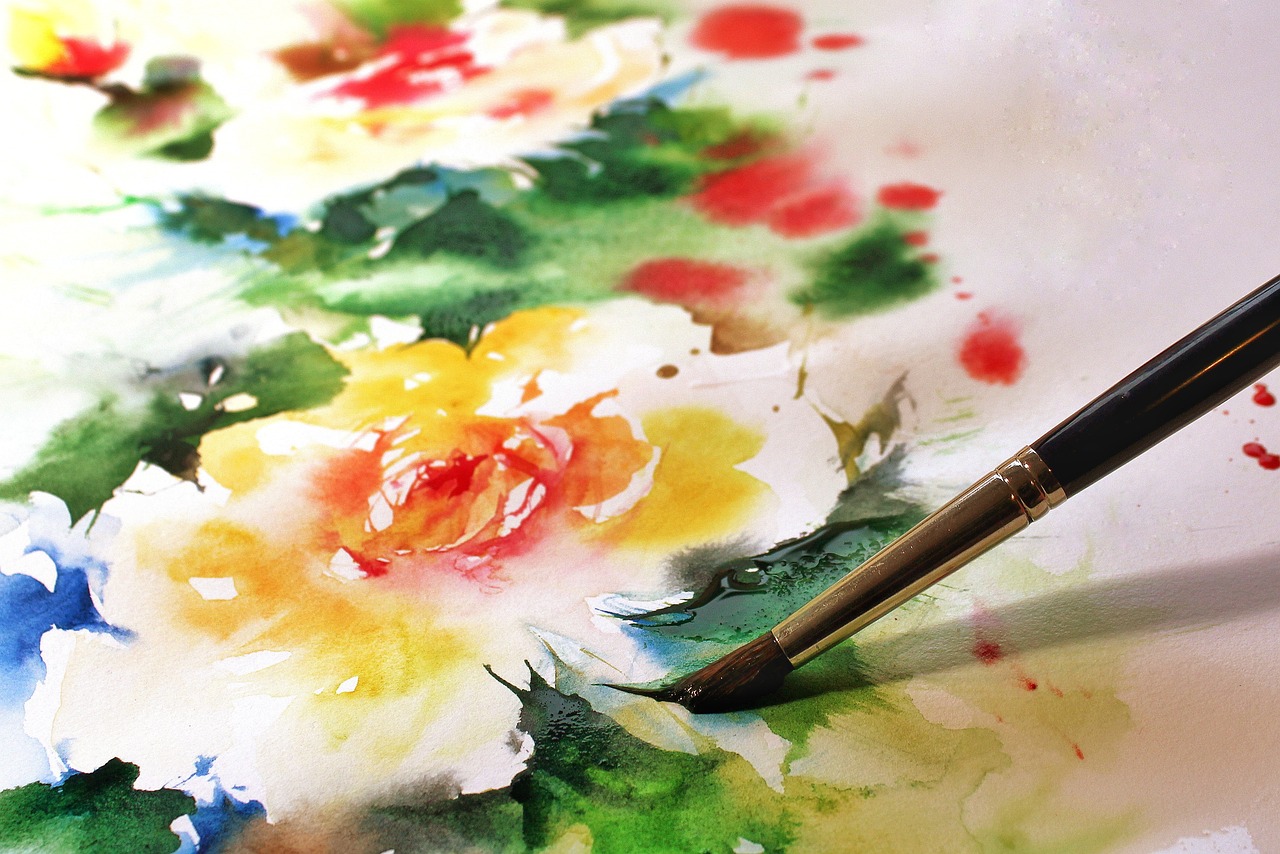
Choosing the Right Fabric
When it comes to embroidery quilting, the fabric you choose can significantly influence the final outcome of your project. It's not just about picking something pretty; the right fabric can enhance your designs and ensure that your quilt lasts for years to come. So, how do you navigate the sea of fabric options available? Let's explore the key factors to consider when selecting the perfect fabric for your quilting adventure.
First and foremost, you want to think about the fabric type. Different fabrics have unique characteristics that can affect how well they hold embroidery and how they feel when finished. For example, cotton is a popular choice due to its durability and ease of use. It’s breathable, making it perfect for quilts that will be used regularly. On the other hand, fabrics like silk or satin can add an elegant touch but may require more delicate handling and specific embroidery techniques.
Another important consideration is the weight of the fabric. Heavier fabrics can provide a sturdy base for intricate embroidery, while lighter fabrics may drape beautifully but can be more challenging to work with. If you’re planning to use a lot of detailed stitching, a medium-weight cotton or a cotton blend might be your best bet. Here’s a quick breakdown of common fabric types and their suitability for embroidery quilting:
| Fabric Type | Best For | Considerations |
|---|---|---|
| Cotton | General quilting, everyday use | Durable, easy to work with |
| Silk | Elegant quilts, special occasions | Requires careful handling, may slip |
| Linen | Textured quilts | Wrinkles easily, can be stiff |
| Polyester | Durable, easy care quilts | Can be less breathable |
Additionally, consider the color and pattern of the fabric. The hues you choose will not only set the mood for your quilt but also affect how well your embroidery stands out. If you’re working with intricate designs, opt for a solid color or a subtle pattern that won’t compete with your stitching. However, if you want to make a bold statement, don’t shy away from vibrant colors and striking patterns; just be mindful of how they interact with your embroidery threads.
Lastly, always remember to pre-wash your fabric. This step is crucial as it helps to remove any chemicals or sizing that may affect your embroidery. Plus, pre-washing can prevent future shrinkage and color bleeding, ensuring that your quilt maintains its beauty over time. By taking these steps into account, you can confidently choose the right fabric that will not only enhance your embroidery quilting experience but also result in a stunning finished product.
- What type of fabric is best for beginners? Cotton is highly recommended due to its ease of handling and versatility.
- Can I use upholstery fabric for quilting? While possible, upholstery fabric can be heavier and may require specific techniques for successful embroidery.
- How do I know if my fabric is suitable for embroidery? Look for fabrics that have a tight weave and are durable enough to withstand stitching.
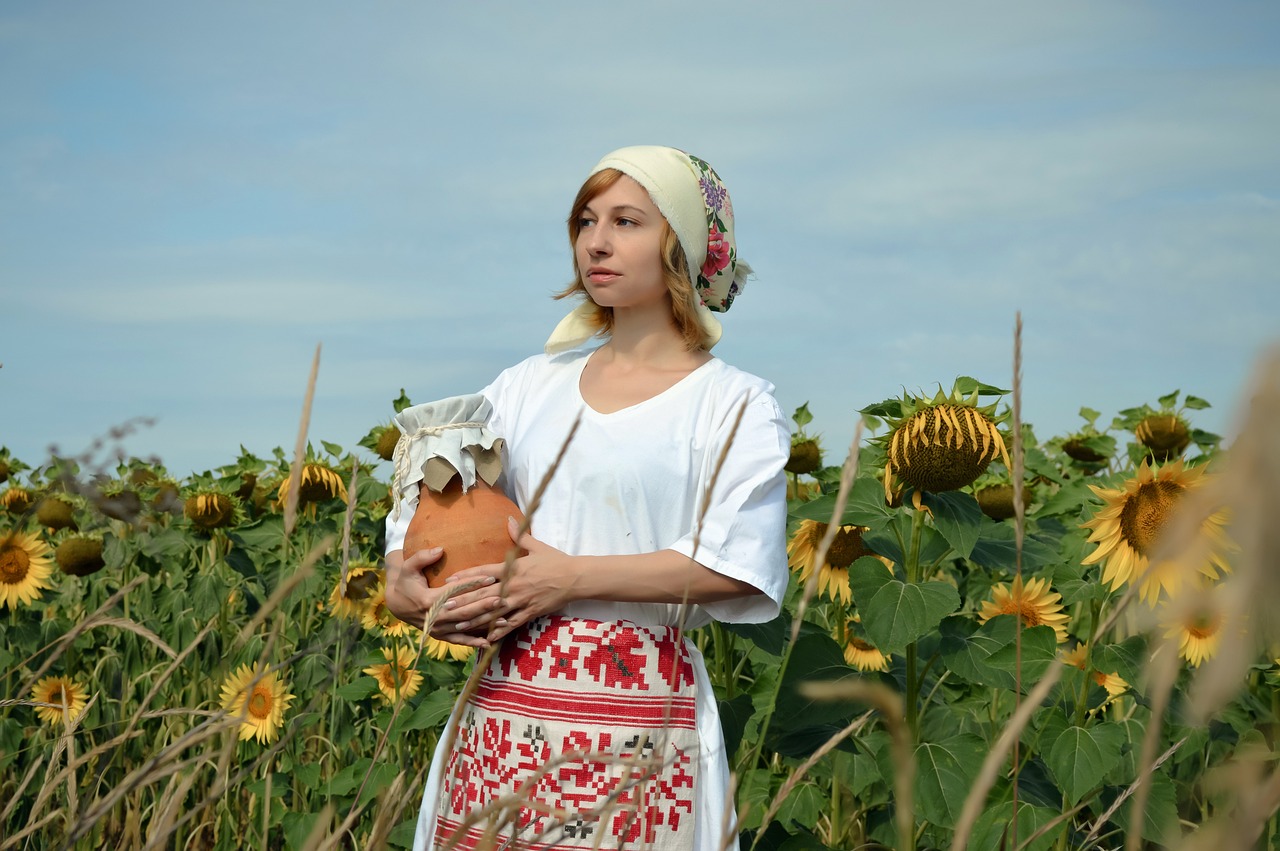
Fabric Care Tips
Taking care of your fabrics is like nurturing a delicate flower; it requires attention and the right conditions to flourish. When it comes to embroidery quilting, the way you handle your fabrics can significantly affect the outcome of your project. First and foremost, always check the care labels on your fabrics before washing. Different materials have unique needs, and ignoring these can lead to shrinkage, fading, or even damage. For instance, cotton fabrics are generally safe to wash in warm water, while delicate silks may require a gentle hand wash.
Before you dive into your quilting project, it's wise to pre-wash your fabrics. This step not only helps remove any chemicals or dyes that could interfere with your embroidery but also allows you to see how the fabric reacts to washing. After pre-washing, remember to dry your fabrics properly. Air drying is often the best option, as it prevents any potential shrinkage that can occur in the dryer. If you must use a dryer, opt for a low heat setting to keep your fabrics in top shape.
Storage is another critical aspect of fabric care. Storing your fabrics in a cool, dry place away from direct sunlight will help maintain their vibrancy and prevent any unwanted fading. Consider using acid-free tissue paper between layers of fabric to prevent creasing and damage. You might also want to avoid folding your fabrics for long periods since this can lead to unsightly creases that are hard to remove later.
When it comes to ironing, always use a suitable setting for the fabric type. For example, cotton can typically handle a high heat setting, while synthetic fabrics may require a cooler approach. If you're unsure, a test patch can save you from potential mishaps. If your fabric has been embroidered, take extra care while ironing to avoid flattening your stitches. A pressing cloth can be a handy tool here, allowing you to protect the embroidery while still achieving a smooth finish.
Lastly, if you ever find yourself with stained fabric, address the stain as soon as possible. Gently blot the stain with a clean cloth rather than rubbing it, which can spread the stain further. For tough stains, consider using a stain remover that is safe for your fabric type, but always test it on a small, inconspicuous area first.
By following these fabric care tips, you can ensure that your materials remain in excellent condition, ready to transform into beautiful embroidery quilts that showcase your creativity and hard work. Remember, a little care goes a long way in preserving the beauty of your quilting projects!
- How often should I wash my quilted fabrics? It's best to wash your quilted fabrics only when necessary, typically when they become visibly soiled or after a long period of storage.
- Can I use regular detergent on my quilting fabrics? Yes, but it's advisable to use a mild detergent to avoid damaging delicate fabrics.
- What is the best way to remove wrinkles from my quilt? The best way is to use a steam iron on a low setting, or you can hang the quilt in a steamy bathroom to relax the fibers.
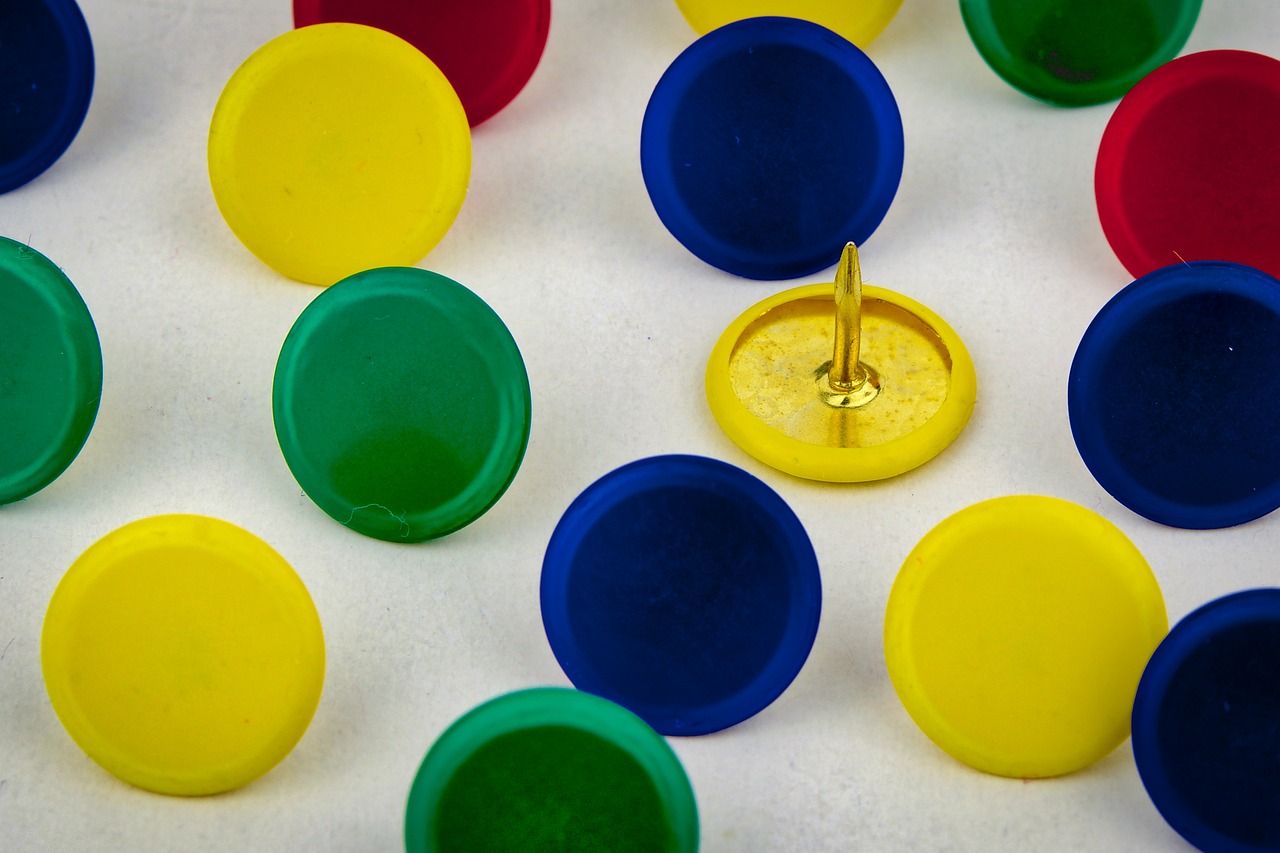
Color Selection Strategies
Choosing the right colors for your embroidery quilting project is akin to selecting the perfect spices for a dish; it can elevate the entire experience and create a masterpiece that tantalizes the eye. Color selection is not merely about picking what looks good; it’s about understanding the interplay of hues, shades, and tones that can bring your quilt to life. First, consider the color wheel, a fundamental tool that helps you visualize how colors interact with each other. Complementary colors, which are opposite each other on the wheel, can create a vibrant and dynamic look, while analogous colors, which sit next to each other, can offer a more harmonious and serene feel.
When embarking on your color journey, think about the mood you want to convey. Are you aiming for a cheerful, bright quilt that radiates warmth? Or perhaps a calm, soothing design that invites relaxation? The choice of colors can significantly impact the emotional response of the viewer. For example, warm colors like reds and yellows can evoke feelings of happiness and energy, while cool colors like blues and greens can promote tranquility.
Another effective strategy is to create a color palette before diving into your project. This can be done by selecting a few key fabrics and then building around those colors. You might start with a focal fabric that has a bold pattern or a unique color combination, and then choose additional fabrics that complement or contrast with it. This not only simplifies the selection process but also ensures a cohesive look throughout your quilt.
Here’s a simple table to illustrate how different color combinations can impact the overall aesthetic:
| Color Combination | Effect |
|---|---|
| Complementary (e.g., Blue & Orange) | High contrast, vibrant energy |
| Analogous (e.g., Blue, Blue-Green, Green) | Harmonious, calming effect |
| Monochromatic (e.g., Various Shades of Blue) | Elegant, sophisticated look |
| Triadic (e.g., Red, Yellow, Blue) | Balanced and colorful |
Lastly, don't forget to consider the context in which your quilt will be displayed. The lighting in the room, the surrounding decor, and even the season can influence how colors appear. For instance, a quilt with bright colors might look stunning in natural light but could appear too harsh under artificial lighting. Always test your fabrics in the light conditions of the intended space to ensure they harmonize beautifully.
In summary, color selection is an essential aspect of embroidery quilting that requires thoughtful consideration and creativity. By understanding color theory, creating a cohesive palette, and considering the quilt's context, you can make informed choices that will enhance your quilting projects and bring your artistic vision to life.
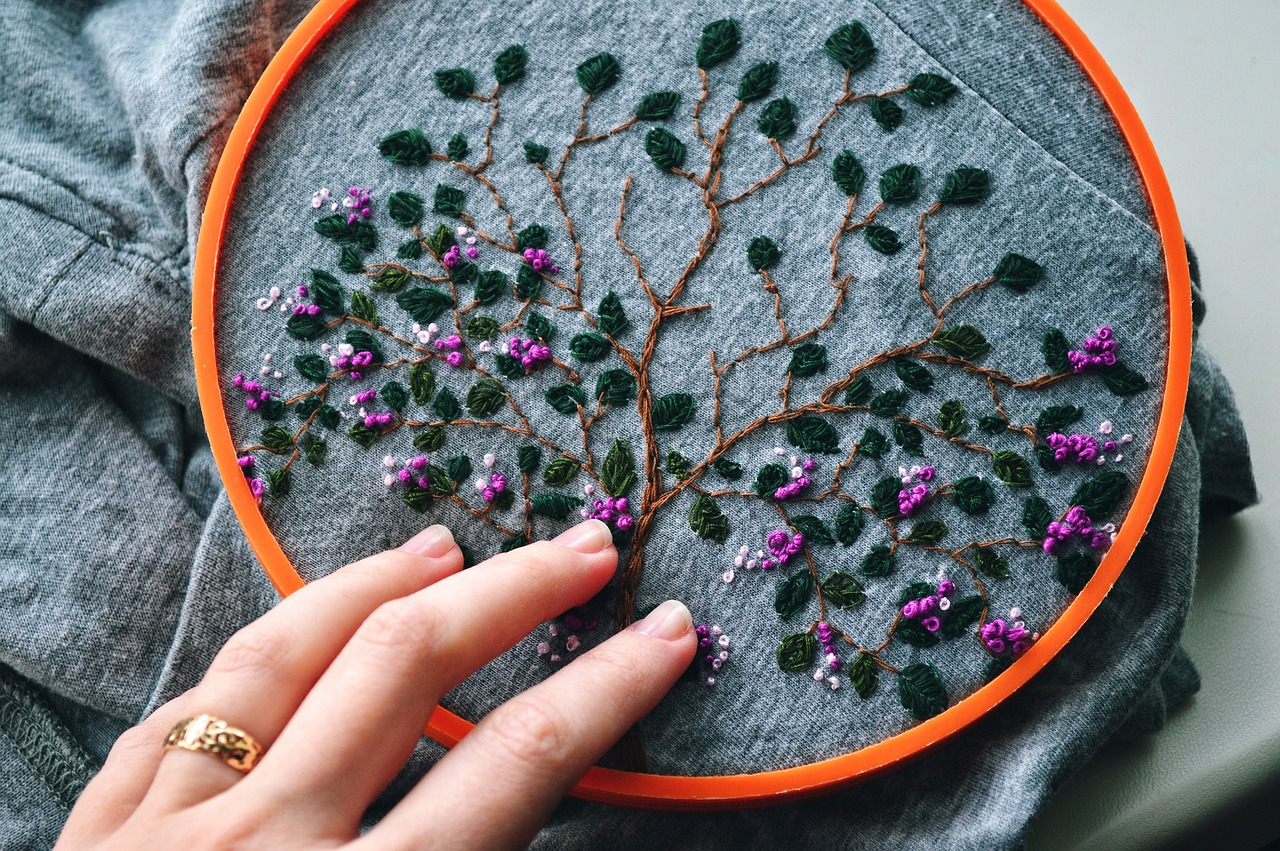
Embroidery Techniques for Quilting
Embroidery quilting is a delightful fusion of artistry and craftsmanship that can transform an ordinary quilt into a stunning piece of art. By incorporating various embroidery techniques, quilters can add depth, texture, and personal flair to their creations. Whether you're a seasoned quilter or just starting, understanding these techniques can elevate your quilting game to new heights.
Let's dive into some of the most popular embroidery techniques that can be seamlessly integrated into quilting projects:
- Hand Embroidery: This traditional method allows for a personal touch. Using simple stitches like backstitch, chain stitch, and French knots, you can create intricate designs that reflect your individual style. Hand embroidery is perfect for adding delicate details and can be done while relaxing on the couch or chatting with friends.
- Machine Embroidery: For those looking for efficiency and precision, machine embroidery is a game-changer. With the right embroidery machine, you can quickly replicate complex designs with stunning accuracy. This technique is particularly useful for larger projects where time is of the essence.
- Appliqué: This technique involves sewing a piece of fabric onto a larger background fabric to create a design. Appliqué can be combined with embroidery to add even more visual interest. Think of it as layering flavors in a recipe; the more you add, the richer the final product!
Each technique has its unique charm and advantages. For instance, hand embroidery allows for creativity and spontaneity, while machine embroidery offers speed and consistency. If you're feeling adventurous, why not try combining both methods? Imagine the possibilities!
When choosing an embroidery technique, consider the overall look you want to achieve and the time you have available. For example, if you're working on a quilt for a special occasion and want to make it extra special, hand embroidery might be the way to go. On the other hand, if you're crafting a quilt for everyday use, machine embroidery could save you time without sacrificing style.
Additionally, don't forget to experiment with different threads and fabrics. The type of thread you use can significantly affect the final appearance of your embroidery. For instance, using a shiny thread can add a touch of elegance, while a matte thread might give a more rustic feel. Likewise, pairing your embroidery with the right fabric can enhance the overall aesthetic of your quilt.
In summary, mastering embroidery techniques for quilting can open up a world of creative possibilities. By exploring hand embroidery, machine embroidery, and appliqué, you can add a personal touch to your quilts, making them not only functional but also beautiful works of art. So gather your materials, unleash your creativity, and let your quilting journey begin!
Q: What is the best technique for beginners in embroidery quilting?
A: Hand embroidery is often recommended for beginners as it allows for greater control and creativity without the need for complex machines.
Q: Can I use any fabric for embroidery quilting?
A: While many fabrics can be used, it's best to choose fabrics that are not too thick or stretchy to ensure clean and precise stitching.
Q: How do I maintain my embroidered quilt?
A: To maintain your quilt, wash it gently in cold water and lay it flat to dry. Avoid harsh detergents that can fade the colors.
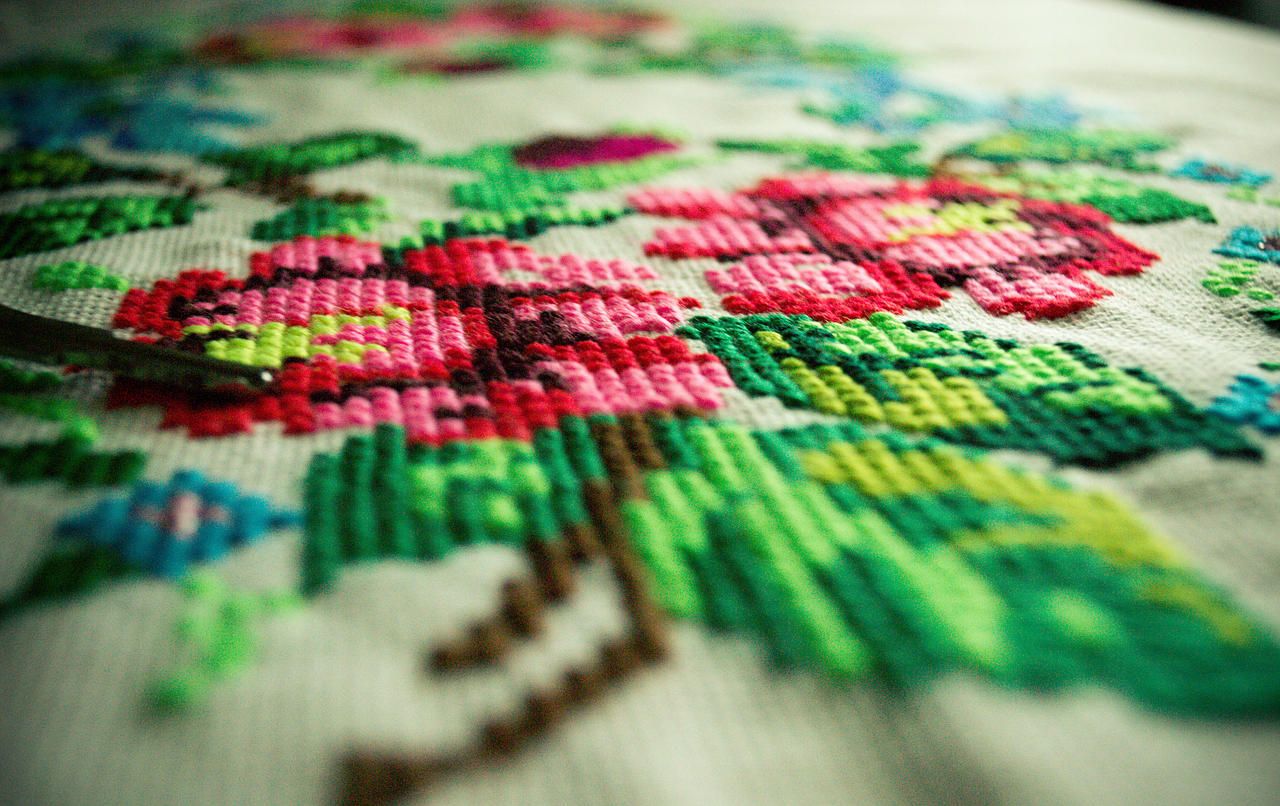
Stitching Patterns and Designs
When it comes to embroidery quilting, patterns and designs are truly the heart and soul of your creation. Imagine your quilt as a blank canvas, waiting for your unique artistic touch. The beauty of quilting lies in its ability to tell a story, and the patterns you choose can convey emotions, memories, or even a sense of place. Whether you’re a seasoned quilter or just starting, understanding how to select and incorporate various motifs can elevate your project to a whole new level.
Popular motifs in embroidery quilting can range from traditional floral designs to modern geometric shapes. Each pattern has its own personality and can influence the overall feel of your quilt. For instance, floral patterns often evoke a sense of warmth and nostalgia, making them perfect for cozy, homey quilts. On the other hand, geometric designs can lend a contemporary vibe, making them ideal for modern décor. So, how do you choose the right pattern for your project?
Start by considering the theme of your quilt. Are you making it for a special occasion, like a wedding or baby shower? Or is it simply a gift for yourself? Once you have a theme in mind, you can begin to explore different designs that resonate with that idea. For example, if you’re creating a quilt for a baby, you might opt for cute animal motifs or soft pastel colors. If it’s for a wedding, elegant floral patterns or hearts could be the way to go.
| Pattern Type | Best For | Suggested Colors |
|---|---|---|
| Floral | Homey quilts, gifts | Warm tones, pastels |
| Geometric | Modern décor | Bold colors, monochromatic |
| Animal | Children's quilts | Bright colors, playful patterns |
Once you’ve settled on a pattern, it’s time to think about how to incorporate it into your quilt. You can use a variety of techniques, from simple hand-stitching to more complex machine embroidery. Each method offers its own set of advantages. For instance, hand-stitching allows for a personal touch and can be incredibly therapeutic, while machine embroidery can save time and produce more intricate designs with precision.
Another exciting aspect of stitching patterns is the opportunity to mix and match different designs. Imagine combining a floral border with a geometric center – it sounds intriguing, right? This approach can create a rich visual tapestry that showcases your creativity. Just remember to maintain a sense of balance; too many competing designs can overwhelm the eye. Instead, aim for harmony by choosing patterns that complement each other.
Incorporating text into your designs can also add a personal touch. Whether it’s a meaningful quote, a date, or a name, adding text can transform your quilt into a cherished keepsake. Consider using a contrasting thread color to make the text stand out, or even a different font style to match the overall theme of your quilt. The possibilities are endless!
In conclusion, the world of stitching patterns and designs in embroidery quilting is vast and filled with opportunities for creativity. By carefully selecting your motifs and considering how they fit into the overall theme of your quilt, you can create a stunning piece that not only reflects your style but also tells a story. So grab your needle, thread, and fabric, and let your imagination run wild!
- What types of patterns are best for beginners? Simple geometric shapes and basic floral designs are great starting points for new quilters.
- Can I mix different types of patterns? Absolutely! Just ensure they complement each other to maintain a cohesive look.
- What thread should I use for embroidery quilting? Cotton thread is commonly used, but you can also experiment with polyester or specialty threads for unique effects.
- How do I care for my embroidered quilt? Always follow the care instructions specific to your fabrics and threads, but generally, gentle washing and air drying is best.
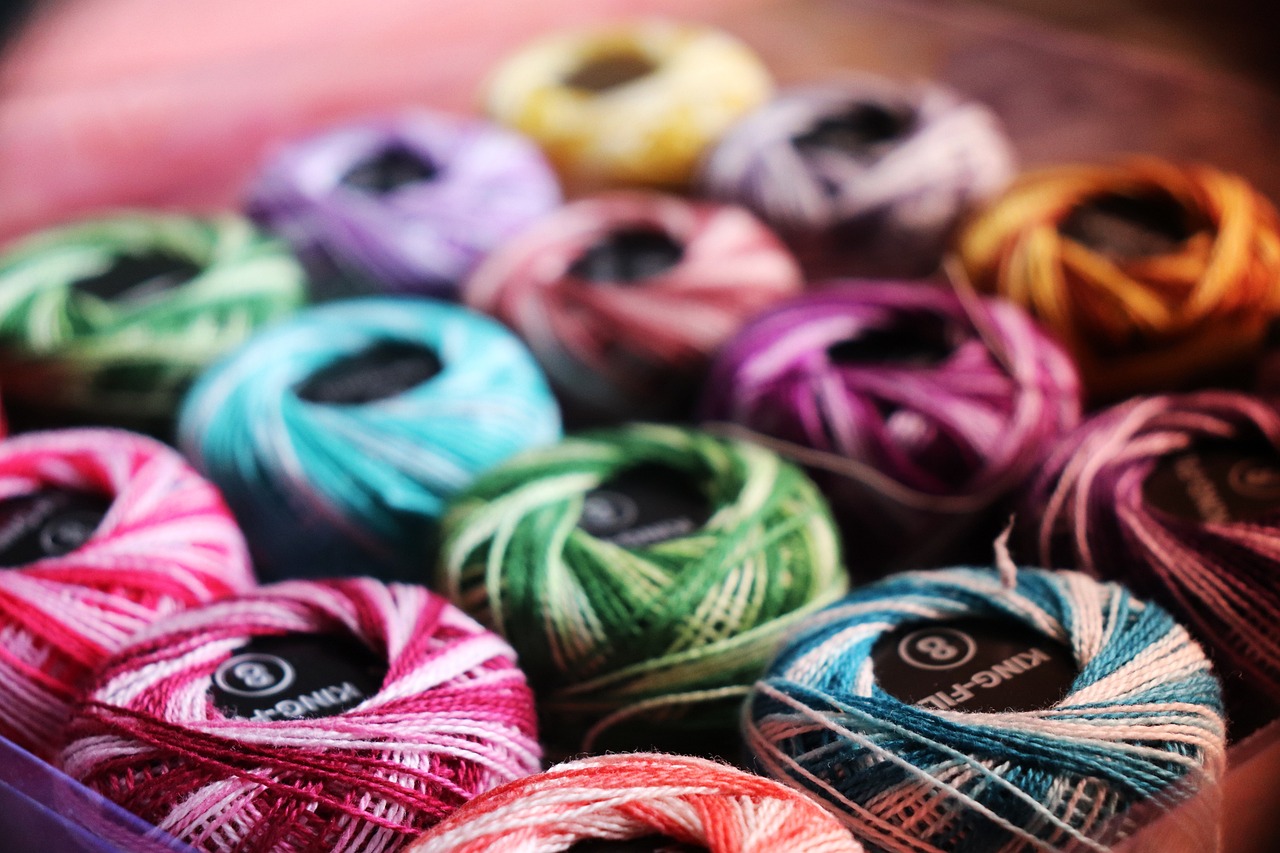
Creating Custom Designs
When it comes to quilting, personalization is everything. Creating custom designs for your embroidery quilt not only showcases your unique style but also adds a layer of sentimentality to your work. Imagine wrapping yourself in a quilt that tells your story, featuring designs that resonate with your experiences and memories. So, how do you go about crafting these custom designs? Let’s dive in!
First off, brainstorming ideas is essential. Think about the themes or messages you want to convey through your quilt. Perhaps you want to commemorate a special event, celebrate a loved one, or simply express your artistic flair. Jot down your thoughts and sketch out a few rough ideas. This initial phase is like laying the foundation of a house; it’s crucial for what’s to come.
Next, consider the tools and software available to help you bring your ideas to life. Many quilters swear by embroidery software that allows you to create digital designs. Programs like Adobe Illustrator or specialized embroidery software can help you manipulate shapes, colors, and patterns to suit your vision. If you’re not tech-savvy, don’t worry! You can also hand-draw designs and transfer them onto your fabric using tracing paper or light boxes.
Once you have your design sketched out, it’s time to choose your colors. Color selection can make or break your quilt’s aesthetic appeal. Think about using a color wheel to find complementary shades that will make your embroidery pop. You might want to opt for a monochromatic scheme for a sophisticated look, or a vibrant palette for a more playful vibe. Remember, the colors you choose should reflect your personality and the message you wish to communicate.
After finalizing your design and color scheme, it’s time to test your design on a smaller piece of fabric. This is a crucial step! By doing a test run, you can see how your embroidery looks and make any necessary adjustments before committing to the final quilt. It’s a bit like trying on clothes before buying; you want to ensure that everything fits just right!
Finally, don’t forget to incorporate meaningful elements into your designs. Whether it’s a favorite quote, a significant date, or symbols that hold personal significance, these additions can transform a beautiful quilt into a cherished heirloom. Consider using a combination of embroidery techniques to highlight these elements, such as combining satin stitches for text with appliqué for decorative motifs.
In summary, creating custom designs for your embroidery quilt is a rewarding journey that allows you to express your creativity and tell your story. So grab your sketchbook, unleash your imagination, and let your quilting adventure begin!
- What materials do I need for creating custom designs? You will need fabric, embroidery threads, needles, and potentially software for digital designs.
- Can I use my own drawings for embroidery? Absolutely! Hand-drawn designs can be transferred onto fabric using various techniques.
- How do I choose the right colors for my quilt? Consider using a color wheel to find complementary colors, and think about the mood you want to convey.
- Is it necessary to test my design? Yes, testing allows you to see how the design looks in practice and make adjustments before the final piece.
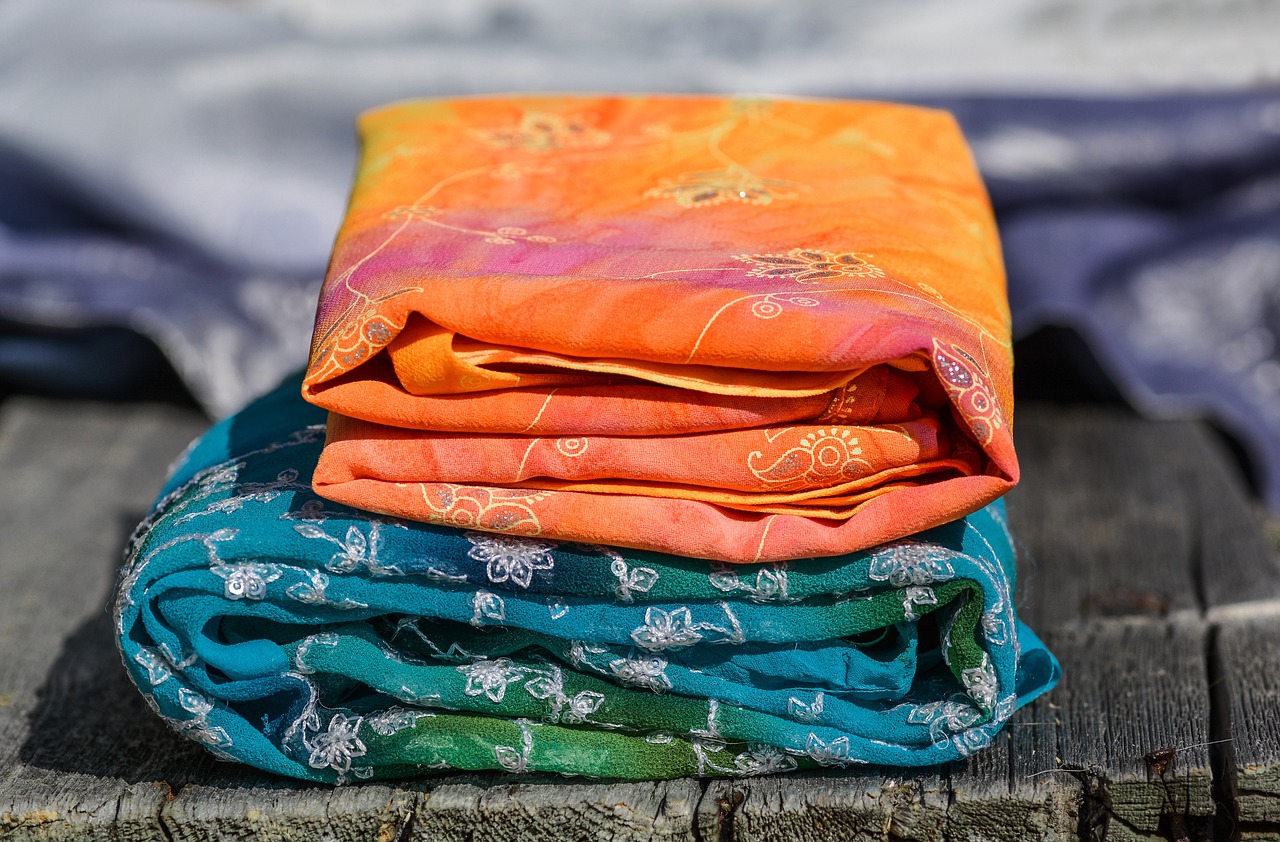
Incorporating Text into Quilts
Adding text to quilts is like giving your fabric a voice; it transforms a simple piece of art into a heartfelt narrative. Imagine wrapping yourself in a quilt that not only keeps you warm but also tells a story—perhaps a cherished quote, a family name, or a significant date. This personal touch can elevate your quilting projects from ordinary to extraordinary. But how do you effectively incorporate text into your designs? Let’s dive into some creative techniques!
One of the most popular methods is using appliqué. This technique involves stitching fabric letters onto your quilt top, which can add texture and depth. You can choose from a variety of fabrics, such as cotton, felt, or even denim, to create a striking contrast against your quilt's background. For instance, using a soft pastel fabric for the letters on a bold, dark quilt can create a visually stunning effect. Additionally, you can play with different fonts and sizes to match the theme of your quilt.
Another effective way to incorporate text is through machine embroidery. If you have access to an embroidery machine, this opens up a world of possibilities. You can choose from a vast array of fonts and designs, allowing for intricate and precise lettering. This technique not only saves time but also ensures that your text is uniform and professional-looking. Remember, though, that practice makes perfect—so don’t hesitate to experiment with different settings on your machine to find what works best for your project.
Hand embroidery is yet another charming option, particularly for those who enjoy the slow, meditative process of stitching. This method allows for a personal touch, as each stitch is made with care and intention. You might consider using a simple backstitch or a more complex satin stitch to create your letters. The beauty of hand embroidery lies in its imperfections, which can add character and warmth to your quilt.
When incorporating text, it’s crucial to think about placement. The text can be centered, aligned to one side, or even wrapped around a design element. Consider the overall balance of your quilt; you want the text to enhance rather than overwhelm the visual appeal. For example, placing a meaningful quote along the edge of a quilt can create a subtle yet powerful statement. You can also create a border of text around the quilt, framing your central design beautifully.
Here are some tips to keep in mind when adding text to your quilts:
- Choose legible fonts: Opt for fonts that are easy to read from a distance.
- Consider color contrast: Ensure that the text color stands out against the background fabric.
- Test your layout: Before committing, lay out your text on the quilt to visualize how it will look.
- Use stabilizers: If you're embroidering, using a stabilizer can help keep the fabric from puckering.
Incorporating text into your quilts not only adds a personal touch but also allows you to express your creativity in new and exciting ways. Whether you choose to use appliqué, machine embroidery, or hand stitching, the key is to have fun and let your imagination soar. After all, each quilt tells a story, and adding text is just one way to ensure yours is heard loud and clear!
Q: What type of fabric is best for adding text to quilts?
A: Cotton is a popular choice due to its durability and ease of handling. However, you can also experiment with felt or other fabrics for unique textures.
Q: Can I use my regular sewing machine to add text?
A: Yes! You can use decorative stitches on a regular sewing machine to create text, though an embroidery machine can offer more options.
Q: How do I prevent my letters from fraying?
A: Using a zigzag stitch around the edges of your letters can help prevent fraying, or you can use fabric glue to secure the edges before stitching.
Q: Is it difficult to create custom text designs?
A: With practice and the right tools, creating custom text designs can be quite manageable. Start with simple fonts and gradually try more complex designs as you gain confidence.
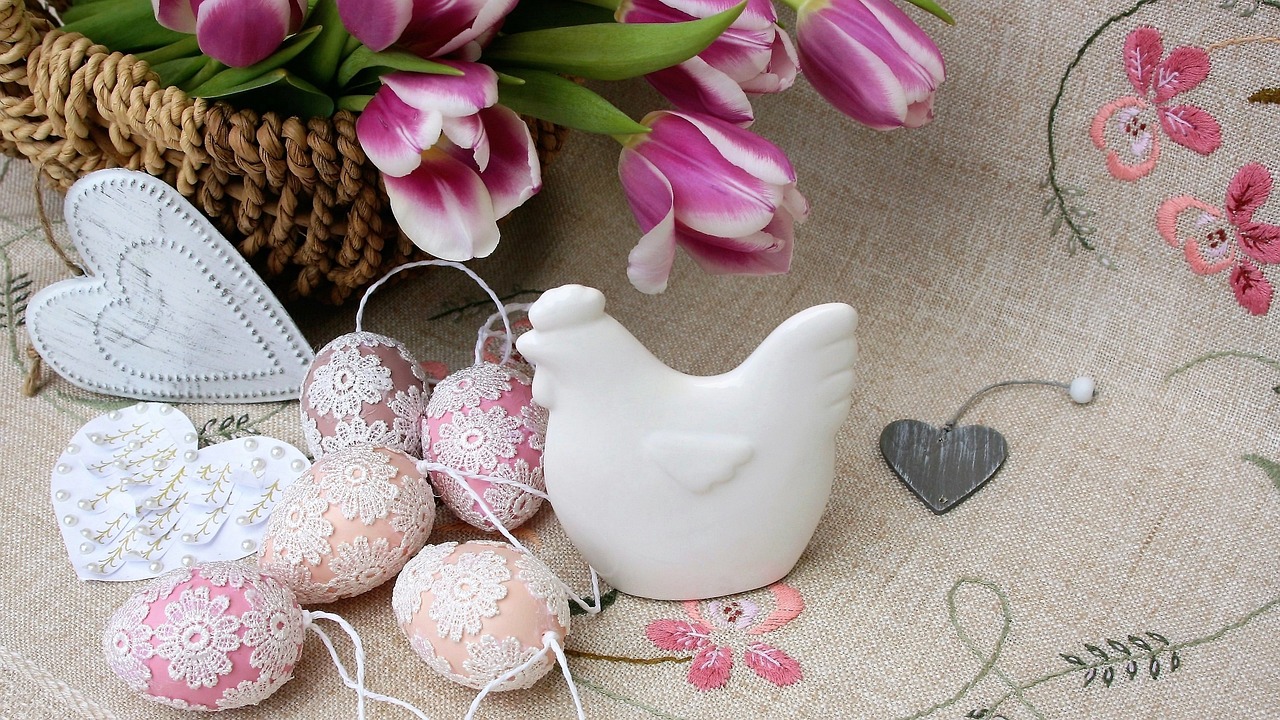
Finishing Touches for Your Quilt
After pouring your heart and soul into creating a beautiful quilt, the finishing touches are what truly bring it to life. These final steps not only enhance the quilt's aesthetic appeal but also ensure its durability and usability. So, what are the essential finishing touches that every quilter should consider? Let's dive into the details!
One of the first things to address is the binding. This is the frame that surrounds your quilt, and it can make a significant difference in the overall look. Choosing a binding fabric that complements your quilt's colors can create a harmonious finish. You can opt for a solid color to frame intricate designs or a patterned fabric to add a fun twist. Remember, the width of the binding matters too! A wider binding can provide a bold statement, while a narrower one offers a delicate touch.
Next, let’s talk about labeling. Adding a label to your quilt is like signing your artwork. It provides a personal touch and can include information like the quilt's name, the date it was made, and even a special message. You can create a label using fabric markers, embroidery, or even printed fabric. This small detail not only adds character but also serves as a wonderful keepsake for future generations.
Once your quilt is bound and labeled, it’s time for the final inspection. Look for any loose threads or imperfections that may have slipped through the cracks during the quilting process. Taking the time to trim these will ensure your quilt looks polished and professional. It's like giving your quilt a little spa day before it makes its debut!
Now, let’s not forget about care instructions. Providing care instructions with your quilt is essential, especially if you plan to gift it. Quilts can be delicate, and knowing how to wash and maintain them will help keep them looking beautiful for years to come. Here’s a simple table to guide you through basic care instructions:
| Care Instruction | Details |
|---|---|
| Washing | Use cold water on a gentle cycle to prevent fading and shrinking. |
| Drying | Air dry or use a low heat setting in the dryer to maintain fabric integrity. |
| Storing | Store in a cool, dry place, ideally folded in a cotton or muslin bag. |
Finally, consider how you want to display your quilt. Whether it's draped over a couch, hung on a wall, or neatly folded in a basket, presentation matters. Each option tells a story and adds to the quilt's charm. Think of your quilt as a piece of art; how would you showcase it in your home to reflect your personality and style?
In conclusion, the finishing touches of your quilt are more than just practical steps; they are opportunities to express your creativity and personal flair. From binding and labeling to ensuring proper care, these elements come together to create a quilt that is not only functional but also a cherished piece of art.
Q: How do I choose the right binding fabric?
A: Look for a fabric that complements the colors in your quilt. You can also consider the style of your quilt; a solid color can offer a classic look, while a patterned fabric can add a playful touch.
Q: What should I include on my quilt label?
A: Include the quilt's name, the date it was made, your name, and any special messages or stories related to the quilt. It adds a personal touch and creates a lasting memory.
Q: How can I prevent my quilt from fading?
A: Wash your quilt in cold water and avoid direct sunlight when drying. Using color-safe detergents can also help preserve the vibrancy of your fabrics.
Frequently Asked Questions
- What is embroidery quilting?
Embroidery quilting is a beautiful fusion of two crafts: embroidery and quilting. It involves adding intricate designs and patterns to quilts, enhancing their visual appeal and personal touch. This technique allows quilters to express their creativity while preserving the traditional aspects of quilting.
- What tools do I need for embroidery quilting?
To get started with embroidery quilting, you'll need a few essential tools. These include a quality sewing machine with embroidery capabilities, various types of fabric, embroidery threads, needles, and stabilizers. Having the right tools can significantly elevate your quilting experience.
- How do I choose the right fabric for my quilting project?
Selecting the right fabric is crucial for achieving the desired look and feel of your quilt. Consider the weight, texture, and color of the fabric. Cotton is a popular choice due to its durability and ease of handling. Always test your fabric with embroidery stitches to ensure compatibility.
- What are some tips for caring for my fabrics?
Proper fabric care is vital for maintaining quality. Before quilting, wash and dry your fabrics to pre-shrink them. After completing your quilt, follow care instructions specific to each fabric type, typically involving gentle washing and air drying to preserve colors and textures.
- How can I select colors that complement each other in my quilt?
Color selection can make or break a quilt's aesthetic. Use a color wheel to find complementary or analogous colors. Consider the mood you want to convey; for instance, warm colors can create a cozy feel, while cool colors lend a calming effect. Experiment with swatches before committing!
- What embroidery techniques can I use in quilting?
There are numerous embroidery techniques to explore, including hand-stitching, machine embroidery, and appliqué. Each method has its unique advantages, such as the precision of machine embroidery or the personal touch of hand-stitching. Choose a technique that suits your skill level and project goals.
- Can I create custom designs for my quilts?
Absolutely! Personalization is one of the joys of quilting. You can create custom embroidery designs using software or by hand. Think about themes or motifs that resonate with you, and don’t hesitate to let your imagination run wild!
- How do I incorporate text into my quilts?
Adding text to your quilts can convey messages or commemorate special occasions. Use embroidery techniques to stitch quotes, names, or dates. Consider the font style and size to ensure readability and aesthetics. This can add a meaningful dimension to your quilting projects.
- What are the finishing touches for my embroidery quilt?
The finishing touches can truly elevate your quilt. This includes binding the edges, labeling your quilt, and ensuring all threads are trimmed. These final steps not only give your quilt a polished look but also prepare it for display or gifting!



















